Framestore’s Glen Pratt in London and JP Li in Montreal talk about building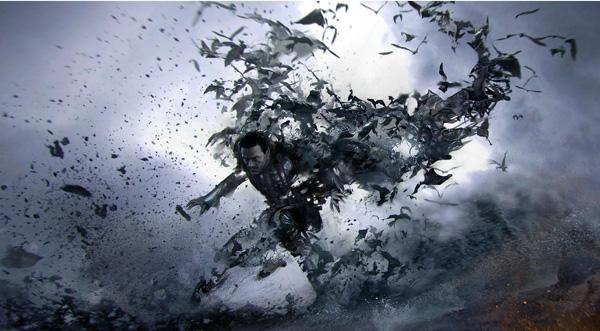
Transylvania, flying with bats and revealing the inner creature on
‘Dracula Untold’.
Framestore Finds the Creature within for ‘Dracula Untold’ |
|
Digital Media World had the chance to interview both the London team’s VFX supervisor Glen Pratt and JP Li, CG supervisor in Montreal, about their work on ‘Dracula Untold’. Between the two offices, Framestore completed over 700 shots for this ambitious project. VFX supervisor Glen Pratttold us that an essential element of the film was the diversity and number of effects required, frequently juxtaposed on screen. “We were not dealing with one large creature, for example, but with many unique, smaller pieces of work,” he said. “It was a lot to keep track of and also meant, inevitably, that some concepts we worked on never made it into the film. But everything taken together helped us get extremely involved in making this movie.” |
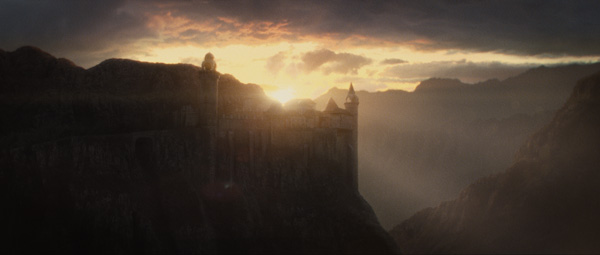 |
|
The director Gary Shore’s vision focused on a visually realistic portrayal of the Dracula story in 15th century Transylvania. Therefore, visual development between Framestore’s Art Department and production designerFrancois Audouywas a key stage of the project, eventually affecting everything Framestore’s VFX departments in London and Montreal worked on. Another constant issue during production and post was the very short time frame of 34 weeks allotted to complete the film. As always, available time affected decisions on approaches, looks and which shots to tackle first. Superheroic DraculaThe production decided early on that the concept of a heroic human being turning into a single bat wasn’t going to work for Gary Shore’s overall vision for the Dracula character. Effort went into establishing Dracula as a superhero figure, transforming him into a flock of bats that takes the form of a powerful hand. Framestore’s work on this signature ‘hand of bats’ began to take shape as part of a key battle sequence. The concept demanded a heroic environment and camera work to effectively reveal the transformation, the hand-like form of the swirling bats, and the advancing Turkish army led by Mehmed the Conqueror. |
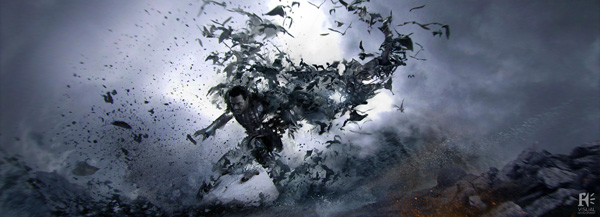 |
|
The camera moves became important to both define the environment and describe the bats’ motion. The hand of bats needed enough room to read on screen and intensify the threat of the army attacking Dracula’s land, a primary story point. “Getting that environment right was quite an achievement considering everything it has to contain, and took a lot of discussion with Gary and Christian,” said Glen. “It holds up well in spite of the minimal plate work - mainly consisting of blue screen - we had to base it upon. “We first built a digital matte painting of the whole world in 3D in Maya, then went back to design the camera moves and the projections back onto geometry in Nuke. Essentially everything you see is matte paintings.” Driving the SimulationsTo coordinate the actor’s performance with what the flock of bats would be doing required a very precise body track of the actor, allowing them to gradually take over and replace his body with CG imagery. A cloth system was developed that allowed them to tear up the cloth into bat-like shapes, which they then used to create the hand of bats, also mixed with hand-animated hero bats. Depending on the camera, they would adjust the balance between the cloth system and the animated CG by alternately cranking the two types of effect up and down, to achieve the precise look needed for each shot. |
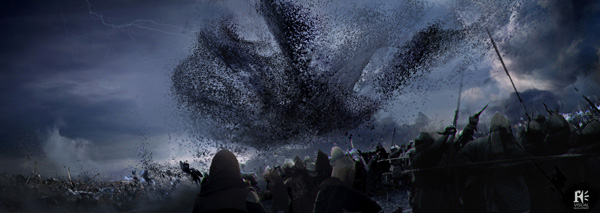 |
|
“Doing the first pass in animation showed where they could break up certain areas. Once this was established, we assessed whether the simulation was behaving as we needed before adding our hero animated bats as a dressing. Then, the shots could be assessed for tweaking – whether it was the bats, the camera, or anything else. This process prevented leaving the FX team to run their simulations for days on end without really knowing how they were playing out. Those artists and the animation team really ran that part of the show.” |
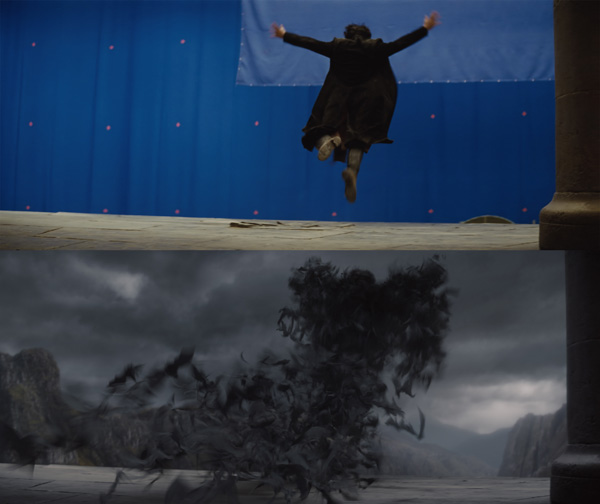 |
|
Under the SkinThe looks of Vlad’s vampire nature, within his human form, were tremendously important but had to be adjustable to follow the unfolding themes of the story. The team decided on a translucent look to the skin in order to reveal the inner creature by degrees when called on. In fact, the audience only fully sees that creature exposed at the end of the movie when Vlad sacrifices himself to ensure his son’s safety. To satisfy the studio, the team also needed to create a look that was alluring, not horrific, although it reflects classic vampire incarnations like Nosferatu. Gary Shore was keen on using distinctive patterning in the earlier shots to hint at that inner creature, for example, when the vampire feeds, feels intense emotion, or when the Master Vampire licks the blood from his face with his monstrous tongue. The final shots, fully revealing the vampire within, were ones Glen especially liked working on, and involved lengthy collaboration with the Art Department. “In terms of design and development, these were some of the shots we started working on first. Our design processes that are seen earlier in the film are all manifest in this shot when the skin peels away to show that creature,” he said. |
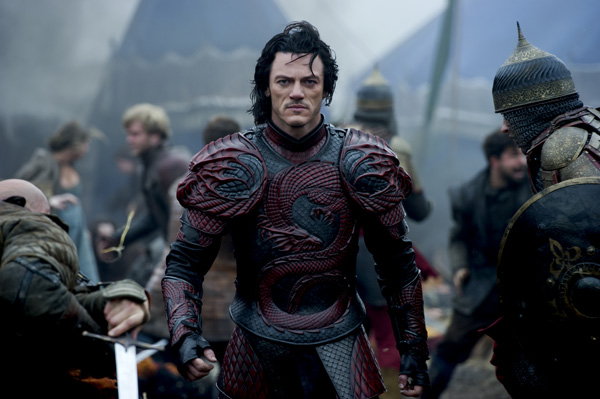 |
|
Digital Make-upThe essential design of the look was locked of when the shoot started but it kept evolving shot by shot as they went into post, so the production decided that instead of putting effort into prosthetics, they would keep the flexibility of digital make-up. Shaders were employed for the look, manipulated through the Arnold renderer. Due to his translucent quality, they sought appropriate references – lychee fruits for example were useful as inspiration for this shader. Since they had to avoid a gory look for the client, they turned to something fresher and more human. To find their way under that skin, they needed base imagery and data from the actor. At every opportunity, they took Lidar scans of him in his various costumes, especially to capture his detail for the bat takeovers. Using numerous tracking markers, Vlad’s face was recorded and taken into Maya to reduce him slightly - though not so much as to interfere with compositing – and do beauty work on the scan to create the actual vampire look. The white subsurface underneath his skin was designed to resemble a human skull, with fine channels for blood to flow from the teeth. |
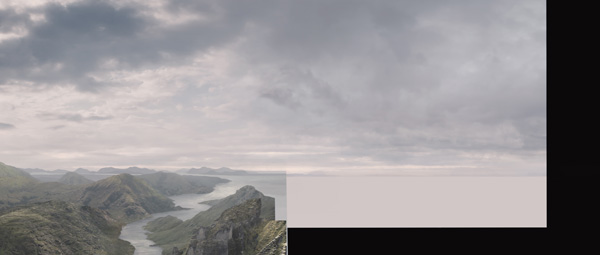 |
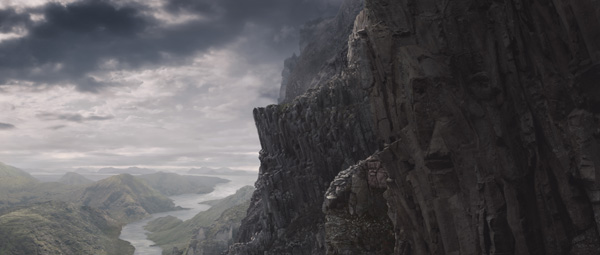 |
|
Vampire BreakdownDeciding against flaming effects or ash, the team went for the look of dark primordial ooze as the basis of a new approach and worked out still another substance to reveal within vampires, not resembling flesh or blood, that turned away from the direction of the sun. The point at which their R&D became too visceral - too much like flesh and blood – was what prompted the black ooze concept, which also tied it to the visual language of bats, already a part of the story. The death was revealed in stages to handle the complexity and detail. Precise body tracking was required to support cloth layers and a more liquid layer emitting from the cloth. Finally, when it still felt as if something were missing inside of that, to prevent an empty look to the shot they also developed an inner core and shrivelled remains from the vampire. |
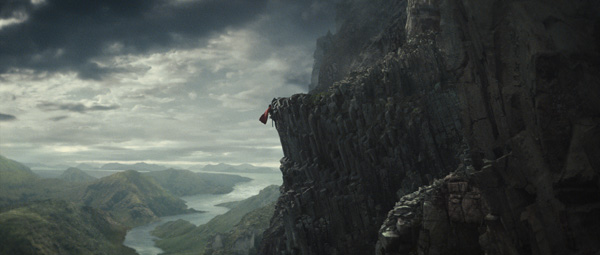 |
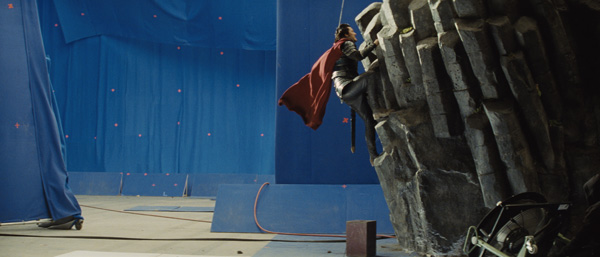 |
|
“This concept only emerged at the time of some re-shoots for the film were shot,” Glen explained. “But for us to encroach on the set space when the schedule was even tighter than during the main shoot was asking a lot from the crew. So Christian took advantage of the chance to simply re-shoot our footage, normally. Tracking these plates, we could still create our point cloud in Nuke – and from there, that point cloud was regenerated using a warp filtering effect to get the end result. Thus, our initial camera array approach wasn’t used but it helped arrive at the conclusion - that’s really the nature of R&D.” Sword’s Eye ViewFor a shot depicting what a sword that Vlad flings at a soldier might reflect, Glen and Christian carried out several tests on set. First, they strapped a camera onto a stake, standing in as the sword, and acted out what Gary wanted to see with a member of the stunt team. They also had a camera strapped to the stuntman when the sword hit. This gave them an idea of what those views looked like - the horizon, the ground and so on – to create a digital double of the live action plate of the soldier as he is stabbed and falls to the ground, which they could then take over. |
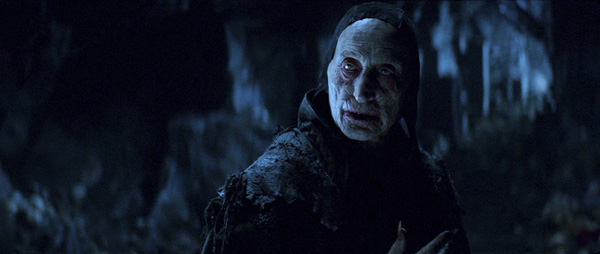 |
|
Creating the shots of the Master Vampire’s tongue involved some alarming element shoots for the drool and saliva that the compositors tracked onto the CG tongue to give the sequence its unnerving realism. Glen said, “We had to first build the tongue and wholly recreate the lower half of the actor Charles Dance’s face – his jaw has to bend to allow the oversized tongue to emerge fully, and the whole shot needed FX work as well. It was a lot of work to compress into a short amount of time.” Against the OddsCG supervisorJP Liat Framestore in Montreal entered the project in November 2013, after the shoot and during a period of flux and decision-making between the Art Department and director. Various visions were in discussion, some of the concepts were changing, and the team had to be flexible and also suggest new ways to visualize some of the story ideas. |
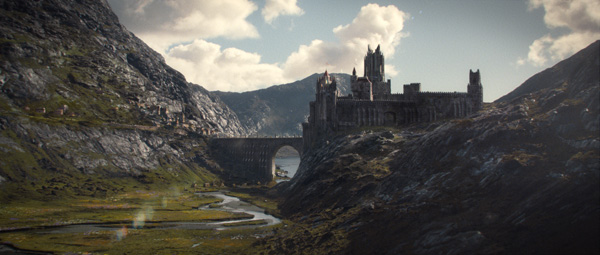 |
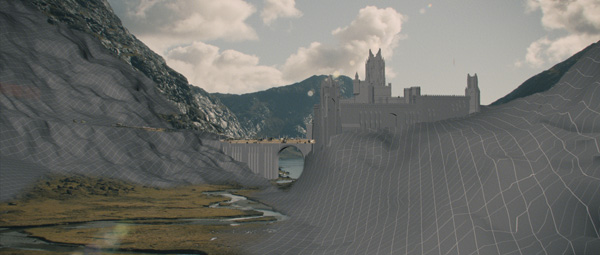 |
|
“The plates contained only Vlad and the extras in full daylight surrounded by blue screen. Any CG assets produced later had to be lit to match the live action and then supplied in the composite to be given the day-for-night grade the entire sequence would receive, making the integration much more effective,” said JP Li. “Our team also created digital mass destruction spreading out around the soldiers, destroying the landscape and adding the cannonballs and burning elements.” Crowd DevelopmentFor the crowd, CG supervisorBen Lambert’s team in London worked withGolaemcrowd simulation software for the first time – not just the application but the developers as well – alongside their in-house crowd softwarefMob. The CG team worked with R&D to modify fMob to handle the crowd data from Golaem, which integrates with Maya, where the agents were created. |
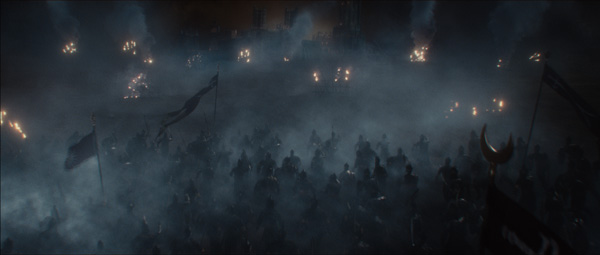 |
|
“Then in the composite, all sources of movement – from the simulation, the motion capture and keyframed hero models – were blended. In some interesting overhead crane shots, the Montreal team created moments when Vlad’s body transforms into the swirl of bats as he turns and spins to confront the on-coming soldiers. This involved some re-animation and re-timing of the live footage, accelerating and slowing it down as required while generating CG bats in time with his motion. Between the crowd integration, the environment, the castle and other effects, the sequence’s 33 shots contained a huge amount of variety.” Castle ConstructionFor Dracula’s castle, the client had been researching references of medieval European castle structures and supplied Framestore with a rough design in SketchUp. From these low-resolution 3D models and some images indicating an approximate size and look as a start point, the team created all details including detailing the towers, the hall, gate and other key elements everyone expects in a castle, based on further thorough research. In some shots that needed matte paintings, they also contributed to the overall design as well. |
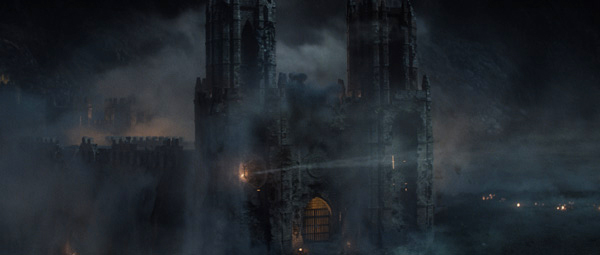 |
|
Getting the speed right required changing the timing of everything else, of course, so finalizing the complete shot was a balancing act of many factors. The audience wouldn’t actually know how fast the cannonball should be moving but would know what felt authentic. Viewers also have to be able to read the direction it comes from when it strikes, using visual cues such as smoke trails. Demolition“Fortunately, as soon as our team knew they had the battle sequence on their agenda, including the castle and surrounds, we decided, ‘There are 33 shots here in which we have Vlad fighting off a massive crowd, a castle and a destroyed battlefield. Let’s build out this environment to accommodate any POV the production might think of.’ We focused on a critical spot where the live actors and CG people were likely to be centred and then extended the scene out from there – the ground, matte paintings, the castle and its spikes – so by the time the cannonball shot came up, all the assets were ready for the camera animation. Nothing extra had to be built.” |
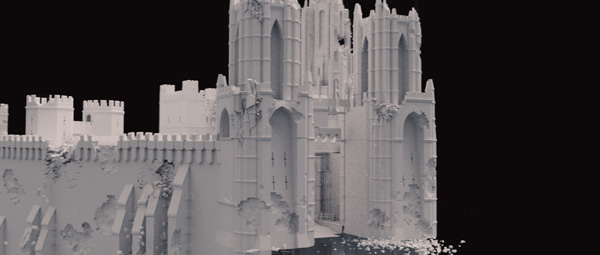 |
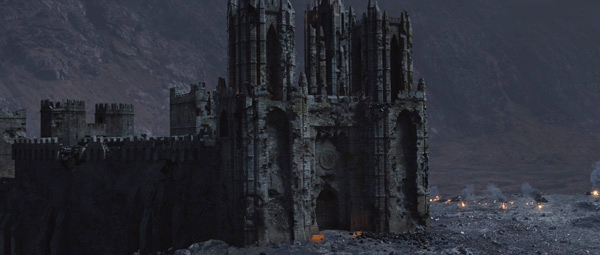 |
|
Armour TransformationThe Montreal team had a chance to work on a different aspect of Vlad’s transformation into a flock of bats that also involved his armour, when an attempt is made to strike him through with a wooden stake. Christian wanted the approaching stake to affect the armour like a hot-air gun, blowing any objects away by exerting pressure. JP said, “We built the armour in CG to match the real armour, but in many, many small layers so that when we ‘blew’ the pressure from the on-coming stake into the armour, it would beak apart into a vortex. “Then for the bat transformation, we separated the vortex area from the transforming area. To ensure they performed exactly as required, the bats were modelled and animated underneath the armour and, taking the armour from the plate, we worked out where to use the bat animation to drive and shape the formation of the armour into bat’s wings. Meanwhile the movement also worked with a tearing simulation similar to the London team’s approach, although in a more rigid way consistent with armour. |
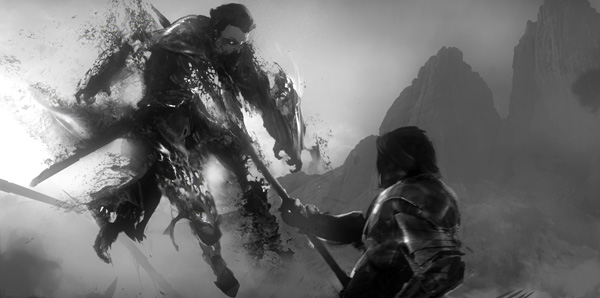 |
|
“This was a pretty complex series of effects to verbalise and to visualise. We were fortunate in that we hit on an approach producing a result that really suited Gary, quite early on. It could have taken round after round of tests. The key was getting the animation to help drive the many layers of simulation,” said JP. MesmerisedShowing the effect that looking at silver has on the vampires’ vision began as POV footage for the vampires, which the team could treat with a discreet, contained, mainly 2D effect, which made it more flexible and creative than some of the heavy CG work. They first devised various ideas for its looks, combining warping, distortion, abrasion, re-timing and lots of roto mattes in 2D to generate the desired effect - which they called the ‘mesmeriser’. “We could turn this effect up or down,” JP said. “We didn’t want it to hurt the viewers’ eyes to watch it, but still show that it affected vision in an unpleasant way. To make a distinction between silver and non-silver objects, we created masks and roto shapes in Houdini to isolate the areas and art-direct how this mesmeriser looked at any moment.” |
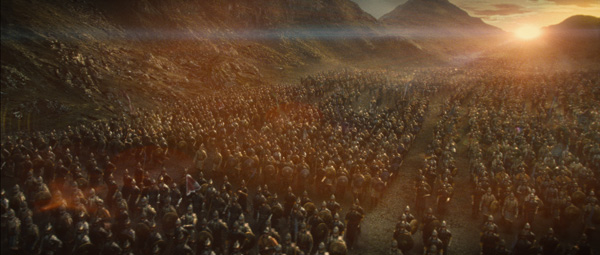 |
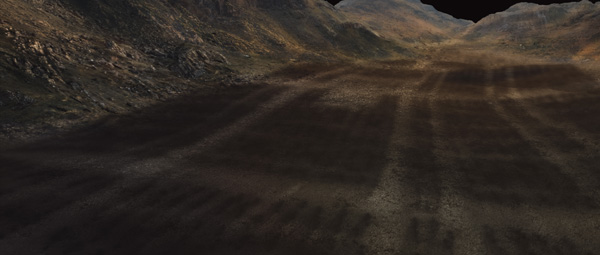 |
|
The Wider ViewThough such scenes were partially shot out at locations in Northern Ireland as well as in their big warehouse studios, they needed substantial extension and building up of the flat countryside into the sweeping Transylvanian terrain and passes. After the battle sequence in which Vlad slaughters the thousand soldiers, he stops and turns to look back up towards the castle and surveys what he has done. “These were our shots of mass destruction with virtually no action, nearly motionless flags and small burning fires,” said JP. “Shots like this allow the viewer to reflect on the extreme sequence they have just experienced and imagine what Vlad is thinking. “One of the big crowd shots shows Mehmed on horseback addressing the Turkish army, comprising some 10,000 soldiers. It had been shot in peaceful countryside with a little over 100 people surrounding him. We replicated the soldiers to fill the environment, along with their swords and weapons, flags and banners, by rotoscoping and compositing the elements into the distance. However, this scene had to hold up looking lively and natural through the entire shot of over 4,500 frames, representing a huge 2D team effort, and when it came to adding the CG crowd, we could composite it in perfectly.”www.framestore.com Words: Adriene Hurst |


















